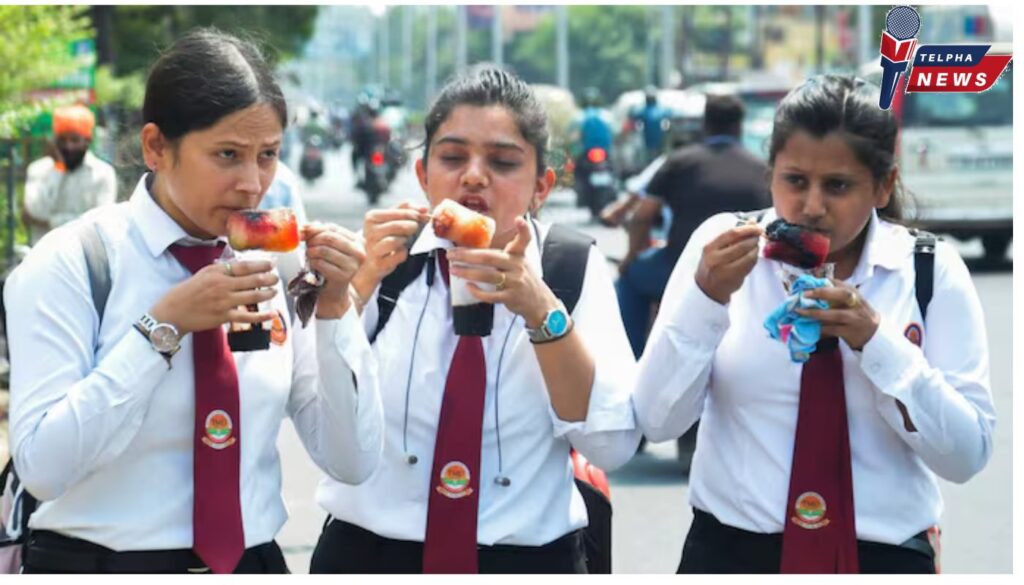Surviving the Heatwave: Extreme Temperatures in Delhi and Beyond

As India braces for an unprecedented heatwave, residents of Delhi and several other states are battling soaring temperatures. On Monday, Mungeshpur in Delhi set a scorching record with a maximum temperature of 48.8 degrees Celsius, closely followed by Najafgarh at 48.6 degrees. These temperatures were eight notches above the normal levels, emphasizing the severity of the current weather conditions.
The Heatwave Crisis: A Closer Look
The India Meteorological Department (IMD) has issued a red alert for Delhi, predicting maximum temperatures could hit 46 degrees Celsius on Tuesday. This extreme weather is not confined to the national capital; a severe heatwave is expected to persist for three days across Punjab, Haryana, Uttar Pradesh, and Rajasthan.
Nationwide Impact
On Monday, Phalodi in Rajasthan recorded the highest temperature in the country at a blistering 49.4 degrees Celsius. Across India, 17 locations breached the 48-degree mark, reflecting the widespread impact of the heatwave. Notable readings included 48.4 degrees in Sirsa, Haryana, and Bathinda, Punjab, 48.1 degrees in Jhansi, Uttar Pradesh, and 48.7 degrees in Niwari, Madhya Pradesh.
Delhi’s Searing Heat
Delhi experienced its second-highest maximum temperature of the season at 45.1 degrees Celsius at the Safdarjung observatory, considered the city’s official marker. This was 4.7 degrees above the normal level. The previous day, Delhi recorded its highest temperature of the season at 45.4 degrees Celsius, marking the first heatwave day in the national capital for this year.
In contrast, last year, Delhi experienced no heatwave days, highlighting the increasing unpredictability and intensity of heatwaves.
Heatwave Precautions and Safety Tips
With such extreme temperatures, it’s crucial to stay informed and take necessary precautions to protect yourself and your loved ones from the heat:
- Stay Hydrated: Drink plenty of water throughout the day. Avoid alcohol and caffeine as they can dehydrate you.
- Limit Outdoor Activities: Try to stay indoors during peak heat hours, typically between 11 AM and 4 PM.
- Wear Light Clothing: Opt for lightweight, loose-fitting, and light-colored clothing to help keep your body cool.
- Use Sunscreen: Protect your skin from harmful UV rays by applying sunscreen with a high SPF.
- Seek Cool Places: Spend time in air-conditioned buildings, use fans, and take cool showers to lower your body temperature.
Looking Ahead: Weather Predictions
Relief is on the horizon. The IMD has forecasted that a western disturbance and moisture incursion from the Arabian Sea are expected to bring respite to northwestern and central India after three days. This could lead to thunderstorm activity in northwest India and rain in the western Himalayan region, providing much-needed relief from the oppressive heat.
IMD chief Mrutyunjay Mohapatra also indicated that June will likely see normal to above-normal minimum temperatures across most parts of the country. This prediction underscores the importance of continued vigilance and preparedness for extreme weather conditions.
Conclusion
The ongoing heatwave in India is a stark reminder of the changing climate and its impacts. As temperatures reach record highs, staying informed and prepared is essential for health and safety. While relief is expected soon, the extreme weather serves as a crucial call to action for addressing climate resilience and sustainable practices.
For continuous updates and tips on how to stay safe during the heatwave, follow us and stay tuned. Stay cool and stay safe!